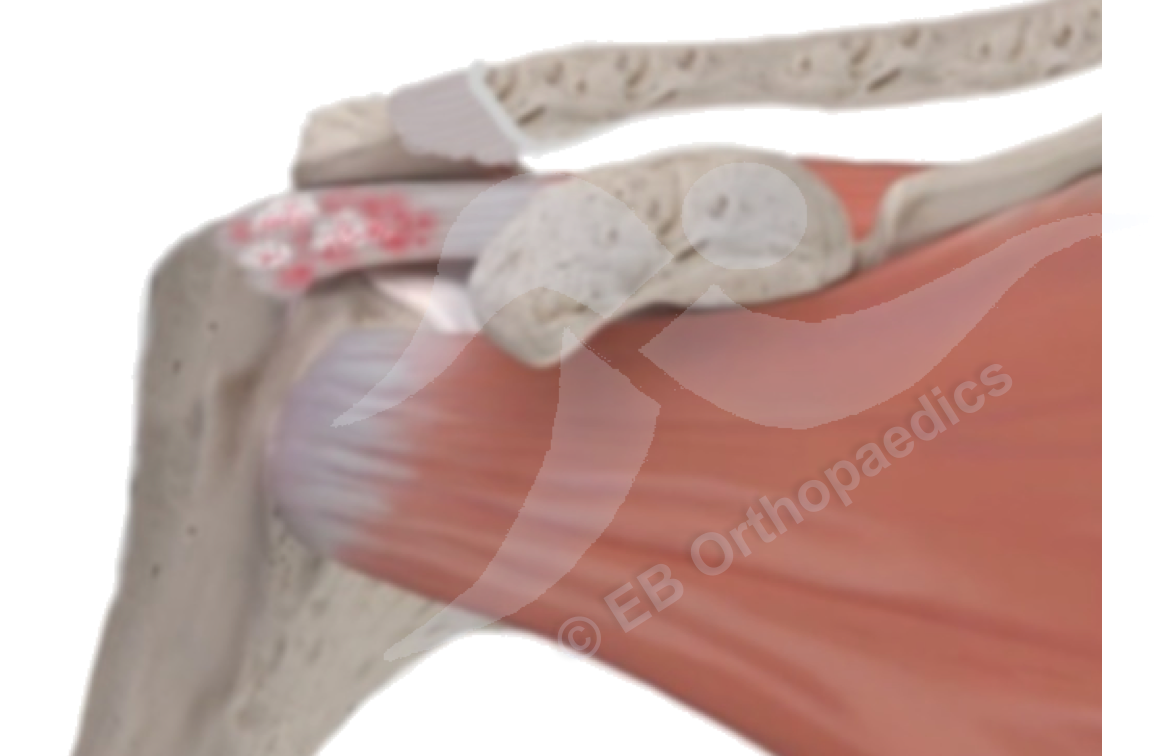Calcific tendonitis

Calcific tendonitis is a condition whereby calcium forms in the tendons around the shoulder. It is not clear why this occurs. The calcium may be present without causing symptoms, or it may become symptomatic after a traumatic event. The calcium can cause pain in the shoulder, whether through a chemical irritation of the surrounding tissues or through a mechanical impingement in the case of large deposits.
It is not clear what causes calcium to form in the tendons around the shoulder but one theory is that it is deposited because of the low oxygen tension in the rotator cuff tendons.
There are a range of symptoms from catching type pain when the arm is in certain positions, through to sudden severe debilitating pain in an acute flare. The pain may be particularly troublesome at night. Some people also report a crunching or clicking within the shoulder.
Often the symptoms settle down of their own accord, with the most painful phases usually being as the calcium forms and as it resorbs.
Injections of local anaesthetic and steroid into the subacromial space (space where the tendons run on top of the shoulder joint) can help.
Barbotage, fenestration, or needling is a process whereby under image guidance and using local anaesthetic, the calcium is broken down to encourage the body to resorb it. This procedure can be uncomfortable but is often effective.
For resistant symptomatic calcium deposits, keyhole surgery may be required to make more space in the area above the shoulder (subacromial decompression) and remove the calcium if possible. If the calcium is deep within the tendon is may be better to leave it and wait for the body to resorb it. Sometimes in order to remove the calcium a small hole is made in the tendons which may need to be repaired. If this is the case care needs to be taken with the shoulder after the surgery as the tendon heals.
You will be given a sling after your surgery as the shoulder will be painful and take time to heal but it is important to get it moving quickly in order to prevent stiffness. If repair of a tendon was performed then the rehabilitation will be slower as the tendon needs to be protected as it heals. The physiotherapy team will be able to advise you on specific exercises to undertake.
While the majority of people get better with physiotherapy and injections / needling, those still with pain tend to do well following surgery.